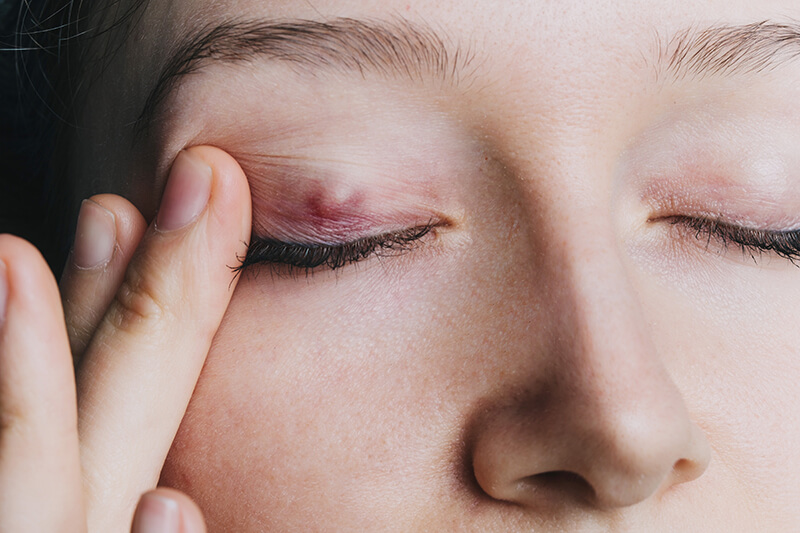Home » Common Vision Disorders » Chalazion
Chalazion
A chalazion (shuh-lay-ze-un) appears as a small lump of the eyelid and is caused by blockage of one of the glands of the eyelid (Meibomian gland). There are about twenty such glands in each eyelid and they drain toward the edge of each lid. They can become blocked by any swelling of the lid tissue, such as that caused by trauma, minor infections, or even eyestrain and rubbing of the eyes.
The condition is not serious and will not endanger the eye. It is a nuisance similar to a large pimple or a small boil. In the early stages, there is usually considerable redness and swelling. Occasionally at this stage, the chalazion will come to a head and drain spontaneously. This is a good sign. Warm compresses and antibiotic eye drops applied four times daily will often accelerate the process. Use a warm wash cloth with regular tap water and hold this over the eye for 10-20 minutes at least four times daily.
In about 50% of people, the lump will not go away completely. After waiting about two weeks, if there is no improvement, it is best to have the chalazion excised.
Excision is performed by instilling anesthetic eyedrops and then injecting Xylocaine through the anesthetized underneath side of the eyelid. The eyelid is turned over with a special instrument so that the lesion can be incised and its capsular wall removed. An eye patch is worn for two hours. No stitches are required and there is no scar on the visible surface of the eyelid. If you do require surgery, have someone accompany you who can drive you home.
Once the chalazion has been excised, antibiotic eyedrops and warm compresses are continued for one additional week. If a person has more than one chalazion at a time, or a recurrent episode, then they are advised to take a tetracycline antibiotic orally for one month at low doses to try to completely eradicate all infection from the eyelash follicles and Meibomian glands. Generally, a chalazion is a once in a lifetime event.
If excision is required this is considered a medical problem, not a cosmetic problem or a vision problem, so it should be covered by any medical insurance you may have. We can bill your insurance company if you would like, but you will still be responsible for any unpaid balance.







